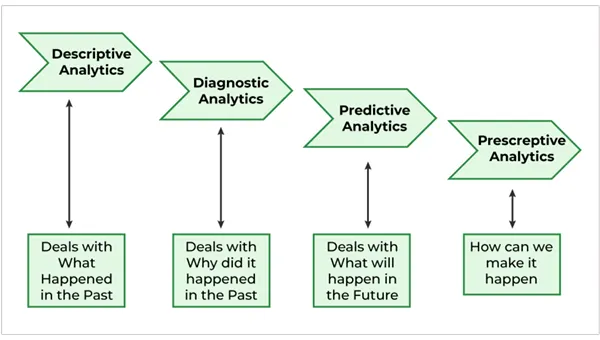
A regular and accurate sales data analysis can provide managers with powerful insights into different aspects of the sales cycle, enabling them to make forward-thinking resolutions.
If you are aware of the metrics to focus on, you can use this knowledge to foster your sales and income. It results in the evolution and continual improvement of your business.
Nowadays numerous sales-related tasks can be managed through email marketing platforms, centralized cloud software, and integration tools, like Einstein Analytics Salesforce, which contributes to the availability of sales-related data.
Here we would like to clarify how to analyze sales data and adapt this technique to your business needs.
Why Should You Analyze Sales Data?
Since “sales data” is a very broad notion, it would be challenging to provide a concise definition for this term.
Basically, viable sales data comprises all the measurable characteristics relevant to the sales procedure.
Every sales leader should have a full-fledged sales analysis system as well as use common methods to analyze the data.
This is necessary to improve your sales team’s performance and reach your company’s goals.
Here are the main benefits you’ll gain by performing a regular and thorough sales data analysis:
1. boost of your revenue;
2. improvement of your business performance;
3. awareness of the current market trends;
4. ability to make data-driven decisions instead of relying on guesswork;
5. assistance in preparing to scale your sales, etc.
Analyzing Sales Data Step by Step
Regardless of your company’s product, internal sales structure, and resources, you can take advantage of the following steps to effectively analyze your sales data:
- Determine your goal & metrics.
- Build a reporting system.
- Apply your changes.
Types of Data Analytics in Sales

1. Determine Your Goal & Metrics
First, you should decide on the objective you follow to analyze your data and the major data points you strive to track.
Once you are done, settle on the most suitable technique (-methods) for performing your sales analysis, taking into account your company’s goals.
Consider the most common methods of sales analysis:
- tracking the number of sold goods;
- improving forecasting accuracy;
- boosting your sales team performance;
- figuring out reinforced solutions to ongoing problems;
- increasing effective customer interaction.
2. Build a Reporting System
Set up a consistent structure for analyzing your data.
Think about the frequency of pulling this data, efficient software for your particular needs, and if you want to share the results.
Take advantage of your CRM functionality to create daily, weekly, or monthly reports for regular reviews of the team’s progress.
Use automation within your CRM to use both sales coaching and feedback software for the most well-rounded insight into your team’s performance.
Communicate your findings with your team as it can be very helpful for the sales reps in every department. It can also be advantageous when scaling up the sales team.
Constant analysis can keep the sales team more focused and productive.
DID YOU KNOW? Over 60% of all marketing can be tracked through sales data analysis.
3. Apply Your Changes
After conducting the analysis, implement any required modifications or adjustments in your sales process.
Using this data can help you target the areas in the sales cycle that may need improvement.
Once you pinpoint the main issue, use the results of your analysis to fix the problem, making the data serve your sales team’s efficiency.
Upgrade Your Sales Process
Intuition and guesswork aren’t the best companions to enhance your sales cycle for the most optimal revenue outcome, unlike the right sales analysis tool.
If the perspective of screening all your business sales metrics to understand the data sounds too overwhelming to you, take advantage of reporting tools and insights to reach data-driven sales success.
Rely on software that offers relevant embedded functionality, realize your competitive edge, withstand intense competition, and gain increasing revenue.
Frequently Asked Questions
Ans: It provides us with insights into the sales team’s performance and helps them build better strategies. It also helps improve the decision-making process within the company.
Ans: Collecting all sales and related data over time from multiple sources and comparing them with past trends to identify patterns and forecast future trends is known as sales trends analysis.
Ans: It is the process of creating and winning sales opportunities and driving change with ideas that matter.
Ans: A sales data analyst is a professional who mainly focuses on analyzing all business data. They are also the people who are responsible for monitoring both the inside and outside of the business. They also help in identifying the areas in which the sales cycle can be improved.







